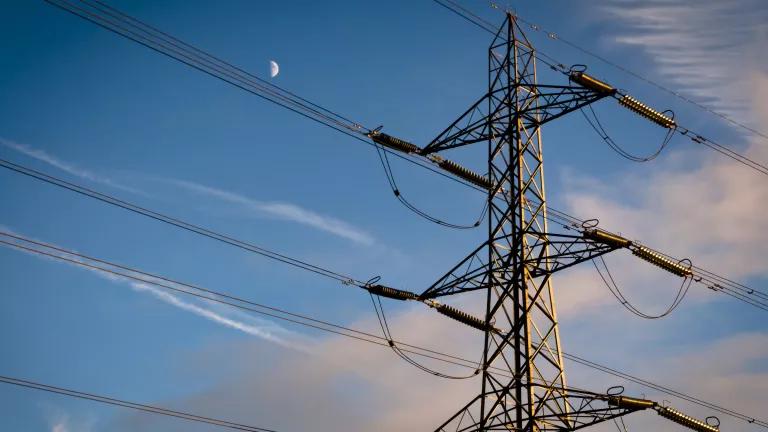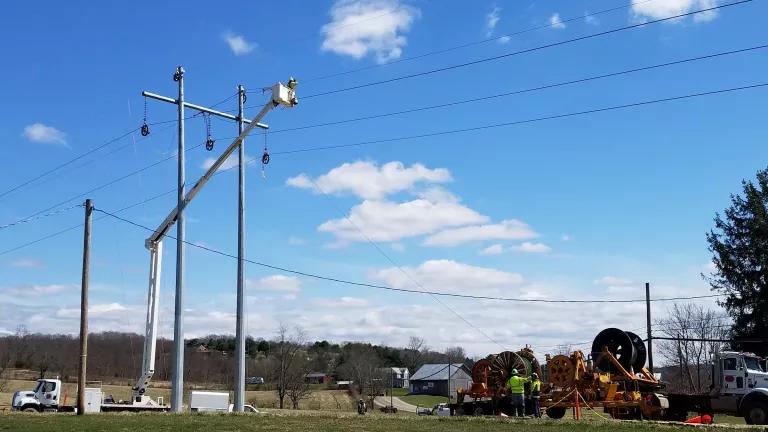Recently in Gray County, Kansas (population 6,005), schools bought iPads for their classrooms—a purchase previously unthinkable in this time of shrinking budgets--thanks to contributions made to the county by a local wind farm. In rural Cloud County, Kansas, three tiny towns now have gas stations, an enterprise made possible by wind farm contributions to a county economic development fund. The renovation of the Brown Grand Theater, in Concordia, Kansas, which is listed on the National Register of Historic Places, is being funded in part by contributions from wind farms. Small towns across the state are reinventing themselves with millions of dollars of wind revenues being poured into education, small businesses, and community development. And Kansas now produces enough clean, renewable wind energy to power about 800,000 homes in the region. That’s enough electricity, for example, to run every household in Nebraska, and then some.
Wind energy has been a boon for Kansas, creating 13,000 jobs in the state and bringing $3 billion in investments in 2012 alone, all while helping keep the air and water clean (which will, in turn, help keep health costs down). So why is there a movement afoot in the state legislature—not just in Kansas but in nearly a dozen states--to quash the growth of clean, renewable energy?
In Kansas and elsewhere, a major driver of the wind industry’s growth has been the state’s Renewable Portfolio Standard (RPS), a law that requires utilities to generate an increasing share of their energy from renewable sources. In Kansas, which has set a target of 20 percent renewable energy by 2020, all utilities are meeting the standards and most are well ahead of schedule, supplying cost-effective clean energy to consumers. By any measure, the Kansas RPS has been a roaring success, as have been similar standards in 29 states across the country. Yet state lawmakers in Kansas, Missouri, North Carolina, Michigan, Colorado, Washington, Oregon, New Mexico, Montana, Maine and Ohio are suddenly demanding to repeal or weaken their state’s RPS.
These lawmakers aren’t working alone. Most belong to a fossil fuel-financed coalition of corporate lobbyists and state legislators, known as the American Legislative Exchange Council (ALEC). ALEC recently joined forces with other conservative groups to dismantle the RPS in every state that has one, and drafted the model legislation now being promoted by its allies in state government.
But the benefits of an RPS are apparent to anyone who cares to look at the facts. By driving the growth of clean energy, an RPS helps bring jobs, investment, revenues, and a sense of pride to local communities across the country, all while helping provide clean air and clean water and reducing global warming pollution.
In Kansas, the RPS even helps attract new business beyond the clean energy industry. Candy-maker Mars recently chose to locate a new manufacturing plant in Topeka, in part because of the availability of wind energy, which fit the company’s interest in a zero-carbon footprint. It’s the first Mars chocolate factory to be built in the United States in the past 35 years, and it’s in Kansas.
In Montana, investment in renewable energy has topped more than $1.6 billion since the state's RPS took effect in 2006. Sixteen hundred Montanans have jobs that did not exist before. The Big Sky State's 650 megawatts of newly installed clean energy capacity is enough to power nearly 200,000 homes and cut more than 1.5 million tons of carbon emissions.
In North Carolina, a recent study found that the state RPS lowered typical residential electrical bills in 2012, and those savings will more than double within a decade. Likewise in Michigan, the Public Service Commission found that the current RPS is saving money for consumers. Reports flowing in from Arizona, California, Colorado, Massachusetts, and Texas all describe the economic lift and cost savings provided by RPS-fostered clean energy development.
Americans value the jobs and economic growth that clean energy can bring to communities—and many state legislators are getting the message. The Kansas State Senate, where Republicans have a supermajority, recently rejected a bill to weaken the RPS, and the House, also with a Republican supermajority, sent a bill attempting to repeal the standards back to committee. After a hearing in which testimony from chambers of commerce, county commissioners, steelworkers, faith-based groups and others were submitted opposing the repeal and describing the benefits of clean energy in their communities, the committee decided to delay voting. The bill to repeal the RPS in Kansas is tabled, at least for the moment.
This is a fight that no state can afford to lose. Renewable energy development, spurred by a state’s RPS, can translate into billions of dollars of investment, thousands of new jobs in struggling communities, and millions of dollars in revenue for dwindling state and local coffers. With these new energy sources come the added benefits of diversifying our domestic energy supply, making our air and water cleaner, and reducing the carbon pollution that is driving global climate change and extreme weather disasters.
In conjunction with strong and smart national renewable energy policies, state standards are crucial engines of growth that will bring us closer to a clean energy future. Polluted-funded front groups already seem to have the ear of some state legislators, but when the people speak up—as they are doing in Kansas—the message is loud and clear. Renewable portfolio standards need to be bolstered for the benefit of our communities, not dismantled for the benefit of polluters.



